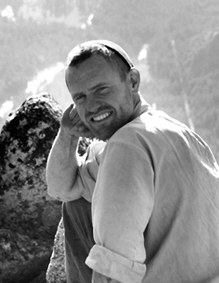Henry Way Kendall facts for kids
Quick facts for kids
Henry Way Kendall
|
|
|---|---|

Henry Kendall climbing in Yosemite Valley. Photo by Tom Frost.
|
|
| Born | December 9, 1926 Boston, Massachusetts, U.S.
|
| Died | February 15, 1999 (aged 72) |
| Nationality | American |
| Alma mater | Amherst College MIT |
| Awards | Nobel Prize in Physics (1990) |
| Scientific career | |
| Fields | Physics |
| Institutions | MIT Stanford University |
| Doctoral advisor | Martin Deutsch |
Henry Way Kendall (born December 9, 1926 – died February 15, 1999) was an American scientist who studied tiny particles. He won the Nobel Prize in Physics in 1990. He shared this award with Jerome Isaac Friedman and Richard E. Taylor. They won for their important work on how electrons scatter off protons and neutrons. This research helped scientists understand the quark model, which explains what protons and neutrons are made of.
Contents
Life and Early Studies
Henry Kendall was born in Boston, Massachusetts. His father, Henry P. Kendall, was a businessman. Henry grew up in Sharon, Massachusetts and went to Deerfield Academy. In 1945, he joined the United States Merchant Marine Academy. He served on a ship that carried troops across the North Atlantic Ocean.
In 1946, he started studying at Amherst College. He focused on mathematics and graduated in 1950. During his summers, he ran a company that did diving and found things underwater. He even helped write two books. One was about diving in shallow water, and the other was about underwater photography.
Becoming a Physicist
Henry Kendall went on to study at the Massachusetts Institute of Technology (MIT). He earned his PhD in physics in 1955. His research looked at a special particle called positronium. After that, he worked at Brookhaven National Laboratory for two years.
Then, he spent five years at Stanford University. There, he joined a research group led by Robert Hofstadter. He worked with Jerome Friedman and Richard Taylor. They used a very long machine called a linear electron accelerator to study protons and neutrons.
In 1961, Kendall became a professor at the MIT Physics Department. He stayed there until he passed away in 1999. In 1991, he was named the Julius A. Stratton Professor of Physics.
Discovering Quarks
In the late 1960s and early 1970s, Henry Kendall worked with other scientists at the Stanford Linear Accelerator Center (SLAC). This included Friedman and Taylor. They did experiments where they shot high-energy beams of electrons at protons and other atomic parts.
Before their work, scientists thought protons and neutrons had no inner parts. But Kendall and his team found that high-energy electrons would bounce off protons and neutrons at wide angles. This meant the electrons were hitting something small and hard inside. These experiments showed that protons and neutrons are made of even smaller particles. These particles were later called up and down quarks. Scientists had already thought about quarks, but these experiments proved they existed. The experiments also showed that gluons, which hold quarks together, exist.
Beyond Science
Henry Kendall was not just a great physicist. He was also a very skilled mountaineer and photographer. He loved rock climbing in Yosemite Valley. He also went on big trips to the Andes, Himalaya, and Antarctica. He took amazing photos of his adventures.
In 1982, he became a Fellow of the American Academy of Arts and Sciences. In 2012, the American Alpine Club honored him for his climbing achievements.
Working for a Better World
Henry Kendall cared deeply about important issues. In 1969, he helped start the Union of Concerned Scientists (UCS). This group works to use science to solve problems facing the world. He was the chairman of the UCS board from 1974 until he died in 1999.
He was interested in preventing nuclear war and making sure nuclear reactors were safe. He also cared about global warming. He was also a member of the JASON Defense Advisory Group, which advises the U.S. government on science and technology.
Death
Henry Kendall died in 1999 during a diving accident. He was exploring a cave at the Edward Ball Wakulla Springs State Park in Florida.
Awards and Honors
- Fellow of the American Academy of Arts and Sciences, 1982
- Bertrand Russell Society Award, 1982
- Nobel Prize in Physics, 1990
- Golden Plate Award of the American Academy of Achievement, 1993
- Hall of Mountaineering Excellence of the American Alpine Club, 2012
See also
 In Spanish: Henry Way Kendall para niños
In Spanish: Henry Way Kendall para niños

